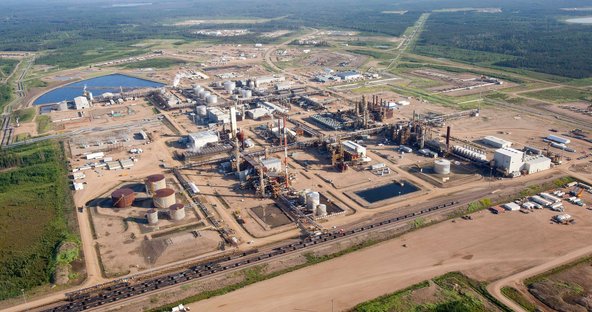 Chris Wattie/ReutersCanada’s prime minister, Stephen Harper, warned that it would be the last such sale.
Chris Wattie/ReutersCanada’s prime minister, Stephen Harper, warned that it would be the last such sale.
MONTREAL — Canada on Friday allowed a Chinese state-run oil giant to move forward with $15 billion takeover of a domestic energy company, but the government indicated that such deals might not pass muster in the future.
The deal — the acquisition of Nexen by the China National Offshore Oil Corporation, or Cnooc — is the latest effort by the Chinese government to find new sources of oil and natural gas reserves to help drive the country’s growth. The state-run Cnooc has been active, striking several partnerships in Canada and the United States.
Canada, in part, has welcomed the alliances.
Prime Minister Stephen Harper has been trying to create new markets to export Canadian energy, which is largely dependent on the United States for its exports. He has been courting China since the United States stalled approval of the Keystone XL pipeline project, which would move more oil sands production to the Gulf Coast.
On Friday, the government also approved a $5 billion acquisition of Progress Energy Resources of Canada by Petronas, the Malaysian state-owned oil and gas company.
But the Nexen deal has also reignited the controversy over strategic assets ending up in the hands of foreign owners. Seven years ago, Cnooc gave up on an $18.5 billion bid for Unocal of the United States after political opposition. Two years ago, Sinochem, a Chinese chemicals maker, backed away from buying the Potash Corporation of Saskatchewan for similar reasons.
 Jeff Mcintosh/The Canadian Press, via Associated PressA Nexen oil sands facility in Alberta. The company is being acquired by the China National Offshore Oil Corporation.
Jeff Mcintosh/The Canadian Press, via Associated PressA Nexen oil sands facility in Alberta. The company is being acquired by the China National Offshore Oil Corporation.
The Nexen bid prompted nationalistic concerns in Canada. Some conservative members of Parliament worried about Cnooc, which is an arm of the Chinese government, gaining control over energy assets generally controlled by Canadian provinces.
Recognizing the sensitivity of the deal, Mr. Harper noted that foreign investment rules would be changed to block companies owned by foreign governments from acquiring properties in Alberta oil sands in all but “exceptional” circumstances.
“Canadians generally, and investors specifically, should understand that these decisions are not the beginning of a trend, but rather the end of a trend,” Mr. Harper said at a news conference. “When we say that Canada is open for business, we do not mean that Canada is for sale to foreign governments.”
It is not clear how the directive will play out on the deal-making front.
Gordon Houlden, director of the China Institute at the University of Alberta, said that the government’s new position might not be well received in China despite Canada’s approval of the Nexen transaction. “This will be a very mixed message for the Chinese,” Mr. Houlden said. “They had ambitions far beyond Nexen.”
He added that Canada’s new stance could also constrain several major state-owned oil companies, particularly Statoil of Norway, which has significant investments in North America. “This will create a major barrier to investors with some of the deepest pockets and who are prepared to think in terms of decades rather than quarters,” he said.
The government’s decision also did not necessarily quell criticism within Canada. Within seconds of the prime minister’s release, Peter Julian, a member of Parliament for the opposition New Democrats, condemned the Nexen approval as an act of “rubber stamping” that did not reflect the views of most Canadians.
The government’s shifting sentiments could curb the deal-making spirits of Chinese companies.
To help drive China’s growth, the government has been amassing natural resources in North America, and in riskier areas like Africa and Venezuela. In North America, Chinese companies have mainly focused on taking stakes in energy companies, rather than buying them.
In July, Sinopec, a competitor to Cnooc, agreed to pay $1.5 billion for a piece of the North Sea operations of Talisman Energy, another Canadian oil company.
After agreeing to buy Nexen in July, Cnooc made several moves to gain the support of the Canadian government. The Chinese company announced plans to keep Nexen management and establish Calgary, Alberta, as its headquarters for North and Central America.
“The Chinese are likely not to look at the oil sands for a while,” said Oliver Borgers, a Toronto lawyer with McCarthy Tétrault who frequently represents companies seeking approval of takeovers under Canada’s foreign investment laws. “The policy is not directed at them specifically, but it’s going to have a major impact.”
But Canada may find it difficult to entirely rebuff the overtures of well-financed Chinese players. Major oil and gas deals require enormous financing, and Canada needs to further develop the oil sands. All of that takes money, which the Chinese government-owned companies have.
Nexen’s own financial struggles prompted its relationship with the deep-pocketed Cnooc. Nexen, which was formed by the merger of two Canadian units of Occidental Petroleum in 1971, has struggled with weak production and profits. One of its core sources of reserves, Yemen, has been plagued by political instability.
Nexen has also run into trouble in its own backyard. OPTI Canada, Nexen’s partner in an oil sands operation in Long Lake, Alberta, went bankrupt after a series of production delays. Cnooc then acquired OPTI Canada for $2.1 billion, giving the Chinese a 35 percent holding in the project.
“I’m not sure you can do without state-owned enterprises,” said Burkard Eberlein, a professor of public policy at the Schulich School of Business at York University in Toronto. “They’re saying, ‘We are open for business, but we are very suspicious of that kind of investor.’ ”
A version of this article appeared in print on 12/08/2012, on page B1 of the NewYork edition with the headline: Canada Clears $15 Billion Chinese Takeover of an Energy Company.
Article source: http://dealbook.nytimes.com/2012/12/07/canada-clears-15-billion-chinese-takeover-of-an-energy-company/?partner=rss&emc=rss